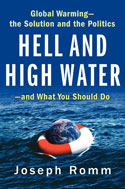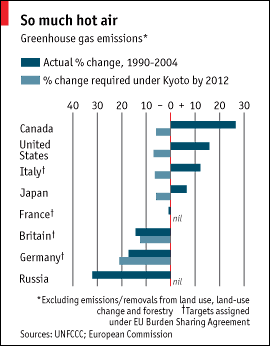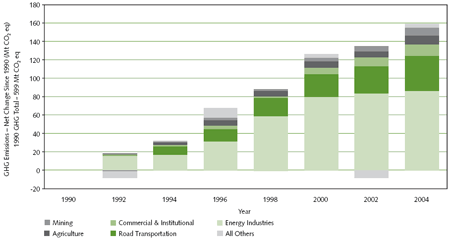 An appalling decision from the Canadian federal government today, reported by the Globe & Mail here: “Tories scrap mandatory long-form census”
An appalling decision from the Canadian federal government today, reported by the Globe & Mail here: “Tories scrap mandatory long-form census”
The census is a vital data source for all sorts of transportation and land use planning. A voluntary census is nearly useless, since the sample will suffer from voluntary response bias. This will do nothing to reduce the number of analysts and bureaucrats – provincial governments will be forced to step in and collect the same data themselves, but this will inevitably result in the loss of province-to-province comparisons.
As for privacy, the alleged basis for this decision: Statistics Canada jumps through all sorts of hoops to ensure the privacy of respondents. It would be difficult if not impossible to connect any of the published census data back to an individual. Yes, the questions are detailed and probing; but the anonymization process used by Stats Can is tougher than anywhere else in the world that I’ve seen.
Tag Archives: politics
Joe Romm on Climate
 I’ve finally found the climate change book that I can recommend widely: Hell and High Water by Joseph Romm, 2006. I urge you to read it, as soon as you can.
I’ve finally found the climate change book that I can recommend widely: Hell and High Water by Joseph Romm, 2006. I urge you to read it, as soon as you can.
Why do I recommend this particular book?
- Clear and accessible. A wide audience can appreciate this book: the language is simple, the opening sections are organized into a story arc, and the numbers and scientific details are kept to a minimum.
- Smart science and smart politics. There are dozens of excellent books on the science alone, and a few good political ones, but very few that really understand both.
- Solutions, not just problems. If you’re going to paint a picture of a monumental challenge to humanity, have the grace to show how we might solve it.
- Alarming, but not alarmist. The problem is a daunting one, but Romm does not exaggerate it or lend any more terror to the issue than warranted by the science.
- Urgency. The problem is truly urgent, and demands immediate action within the next decade. The reasons for this are challenging to explain, but absolutely necessary.
- Achievable fixes, not impossible dreams and moral lessons. This isn’t an environmentalist’s rant about the evils of consumerism. Romm spares us the sermons and gives a clear illustration of the way forward, without requiring massive change from hundreds of millions of unwilling people.
- Good references. The book itself is not complete, but Romm’s blog answered many of my follow-on questions after I finished the book.
Joe Romm has a blog (ClimateProgress), but I really recommend reading his book first. The blog is more technical, but it’s also less suitable just because it’s a blog and not a book: less structured, more opinionated, and including news that is often depressing. That said, it’s a great place to continue learning about the subject after you finish the book. The package of policies he proposes in the book for 2010-2060 are part of path leading to 550ppm CO2, based on the 2006 consensus. Since then, a number of scientific findings have pushed Romm to prefer a 450ppm target, and he has put forward a series of posts on the subject; I’d suggest starting with the [Updated:] climate change impacts discussion, then the full solutions package [updated March 2009] and then reading the rest of the series. But really, get the book first.
If you’re a climate skeptic who is willing to be persuaded by good arguments, please give the book a try. You may need to suspend the disbelief for a while, and particularly forget some of the disinformation you’ve likely absorbed from the popular media. Keep the skepticism—it’s healthy!—hear the argument out, and then follow up with one of the dozens of books on the science itself, or one of the documentaries showing how the climate denial industry has waged a relentless P.R. campaign to prevent action on this issue. If you’re a science major or researcher, you can probably understand how the IPCC process works, and can dig deep into the IPCC reports themselves and inspect the arguments first-hand. If you’re not a science major, the whole process is much more opaque and the denial industry arguments can sound persuasive; I don’t have a good book to make the case to skeptical non-scientists yet.
Coming up soon: a review of the urgency, and a look at the transportation component of Romm’s plan.
Canada in last place

I was startled to see the figure on the right in a recent Economist article. Canada is not only going in the wrong direction when it comes to reducing greenhouse gas emissions, it’s actually doing worse than the rest of the G8, including the United States.
One interesting aspect of Kyoto is that it isn’t indexed to population growth, so countries that accept large number of immigrants (e.g., Canada) are penalised relative to nations that have limited population growth (e.g., western Europe). Ultimately, I suspect this makes sense: the immigrants that Canada accepts are largely from low-carbon nations, and are likely to adopt high-carbon lifestyles upon arrival, so migration is not simply a redistribution of existing emissions. Nevertheless, it does leave Canada at a further disadvantage. Mind you, as the Economist figure shows, the European nations are striving for higher targets than Kyoto anyways – their internal burden-sharing agreement allocates more reduction burden onto high-emission nations.

Looking a little closer (with a little help from an Environment Canada report), we can see the breakdown of the growth in the figure above. I’d like to see this in a little more detail, breaking down energy and transportation a little more finely. Canada’s GHG emissions grew by 26.5% from 1990-2004 (from 599MT to 758MT), and I’ve expressed the 1990-2004 GHG increases in each category as a percentage of 599MT, to show how each sector contributes to the 26.5% growth.
- 8.5%: fossil fuel industries, pipelines and “fugitive sources” (coal, oil, natural gas)
- 7.8%: road and off-road transportation
- 5.8%: electricity generation
- 2.0%: commercial/institutional
- 1.7%: agriculture
- 1.5%: mining
- 0.3%: domestic marine transportation
- 0.2%: domestic aviation
- 0.2%: industrial processes
- -0.2%: rail
- -1.3%: other
- 26.5%: total
This puts in context some of the recent politicking about GHGs. Yes, the fossil fuel industries are a large part of the problem: the oilsands are a major source of carbon emissions, and the growth of exports in Alberta is clearly a big part of our emissions (8.5/26.5 = 32% of growth in GHGs). But, road/off-road transportation (29% of growth) and electricity (22% of growth) have also contributed significantly to our recent increases in emissions.
Breaking down the 7.8% from road and off-road transportation further:
- 3.6%: heavy-duty trucks (gasoline & diesel)
- 2.9%: cars and light-duty trucks (gasoline, diesel, propane and natural gas)
- 1.5%: off-road transportation (construction, agriculture, snowmobiles, ATVs)
- 7.8%: total
Heavy-duty trucks are a significant part of road transportation growth. Keep in mind that this is part of other changes in the freight industry, including a 0.3% increase in marine emissions and a 0.2% decrease in rail emissions, giving a 3.7% net increase for freight. The switch from cars to SUVs, the ongoing decline of transit usage, and the ongoing rise in kilometres travelled per person contributed to the 2.9% contribution by cars and light-duty trucks. Off-road usage is a bit weird, and I haven’t looked into how they measure this distinction.
Now I have a sense of how my new field fits into the bigger GHG picture: passenger transport makes up over 10% of Canada’s growth in GHG emissions. Stopping that growth is clearly an important start towards stabilizing national (and global) emissions, but that’s just the beginning – the latest negotiations are talking about a 50% reduction in global emissions relative to 1990. If developing countries are allowed to increase their per capita emissions, Canada would need something closer to a 75-80% reduction in emissions for a net 50% reduction globally.
Phew. I’m sure that’ll be a cinch.